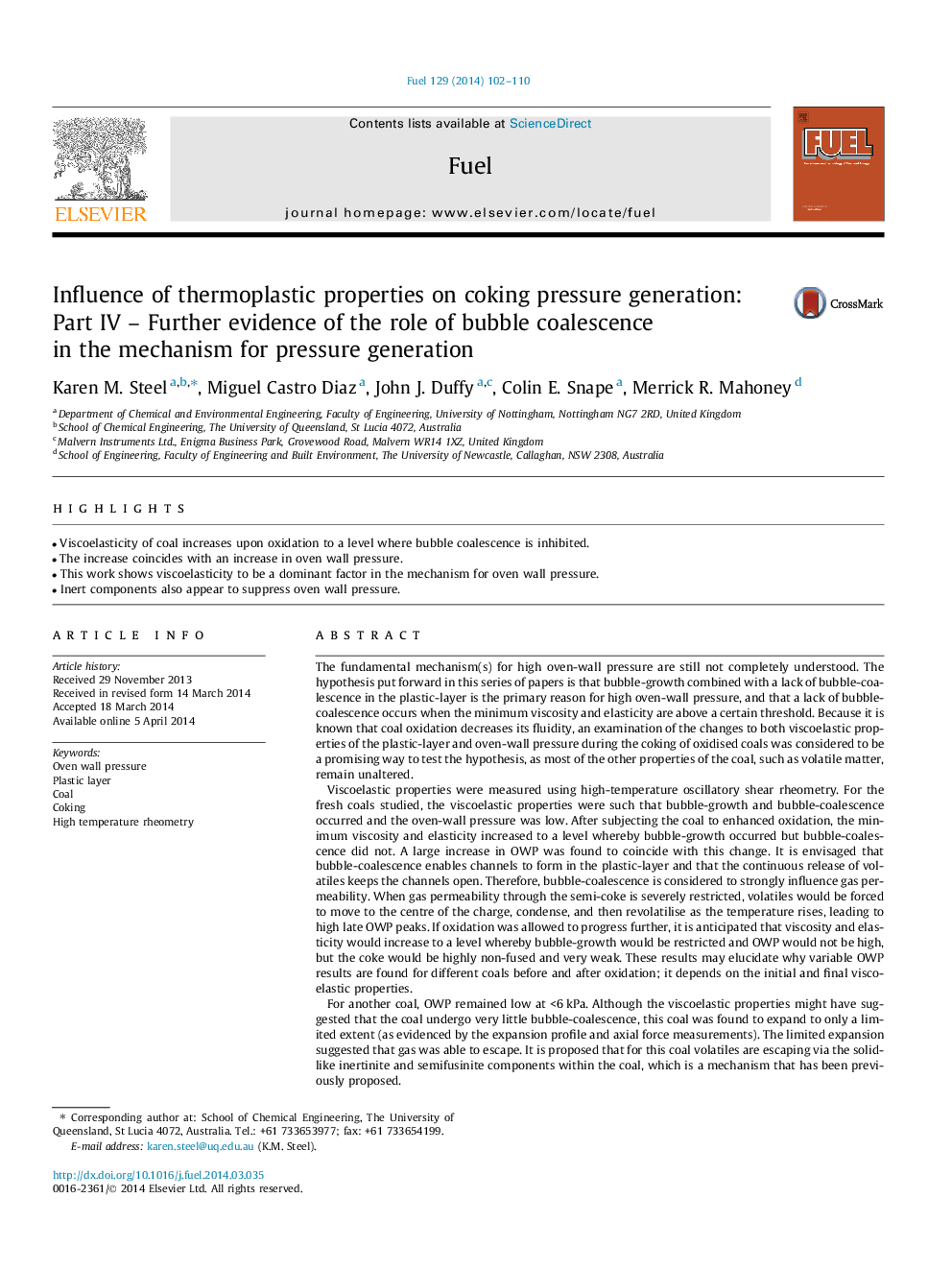| Article ID | Journal | Published Year | Pages | File Type |
|---|---|---|---|---|
| 6637536 | Fuel | 2014 | 9 Pages |
Abstract
This work reinforces the proposed coking pressure mechanism and indicates that coking pressure could be controlled by manipulating the viscosity and elasticity to provide a significant region of bubble-coalescence or by adding inert solids. It follows that the phase angle - complex viscosity mapping plots, in conjunction with the ÎL and/or axial force profiles, could be used to identify whether a coal or coal blend is likely to generate a high pressure. Considerable refinement of the tests is thought to be necessary to enable more accurate and reliable predictions.
Keywords
Related Topics
Physical Sciences and Engineering
Chemical Engineering
Chemical Engineering (General)
Authors
Karen M. Steel, Miguel Castro Diaz, John J. Duffy, Colin E. Snape, Merrick R. Mahoney,
